How to distinguish quality spices from fakes: red pepper

ATTENTION! CHEAPLY INADGED RAW MATERIALS IN SEASONS - THIS IS DANGER FOR LIFE
Red pepper (Latin Capsicum annuum) is one of the sharpest and burning spices known on the planet, made from bitter varieties of peppers.
Regions of growth: India, China, tropical regions of the USA and Thailand. On an industrial scale, red pepper is grown in India, USA.
Harvesting: January-April.
Harvesting takes place in 4 stages as the fruit ripens.
- After harvesting, the pepper is dried in the sun (sun dry)
- Raw materials are dried for 10-15 days. During the drying process, workers select dry pods and pour them into the rows.
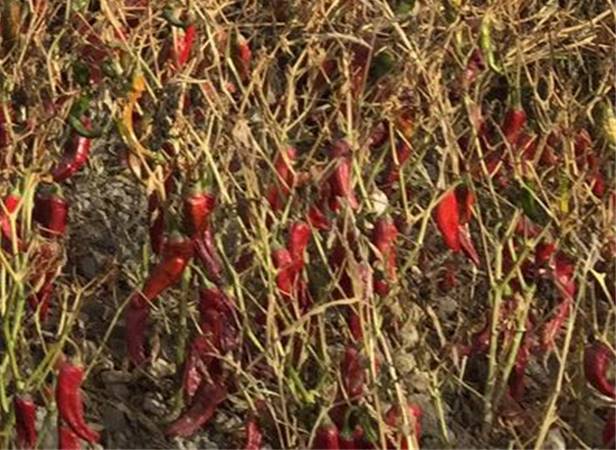
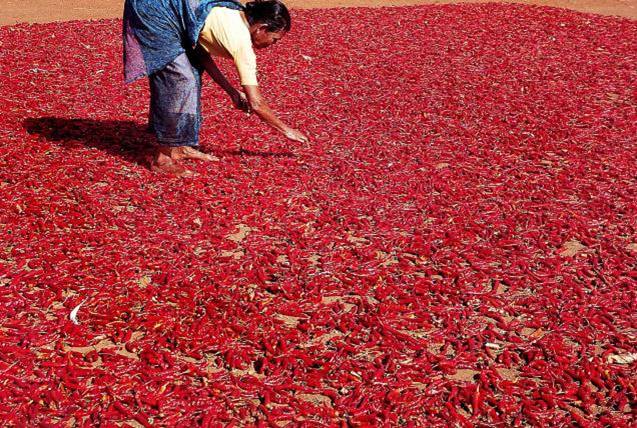
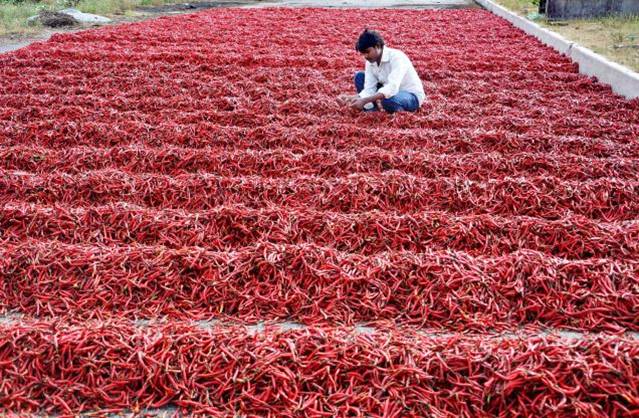
Red pepper. Cooking application
Red pepper gives dishes an island taste and a rich peppery flavor. Chili is widely used in the kitchens of many peoples of the world, both fresh and dry. Especially often it can be found in Mexican and Asian cuisine. The taste of red pepper gives an extra note of piquancy to soups, sauces, rice, salads, meat, marinades and even desserts.
In borscht, soups and other hot dishes, red pepper, most often added as ground powder or fresh whole.
With the help of dried pepper fruits, you can aromatize olive oil or vinegar for more flavorful dishes.
Popular sauces and dishes with hot peppers:
- adzhika;
- Mexican stew;
- stuffed pepper;
- spicy paste with chile;
- sharp oriental soups;
- hot pickled peppers, etc.
This spice is a part of many famous sauces (Tabasco in America, Arris in North Africa, Sambal in Indonesia), ketchups, and a spicy mixture of curry.
The successful combination of red pepper with vegetables, meat and fish will give a piquant taste to the dish. In this case, the severity can be adjusted not only by selecting different varieties of pepper, but also with the help of other spices and seasonings.
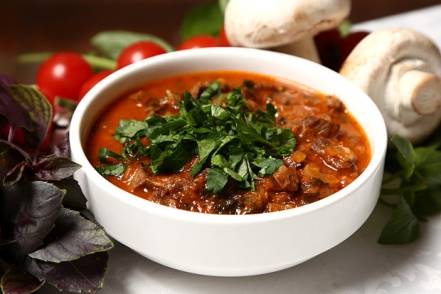
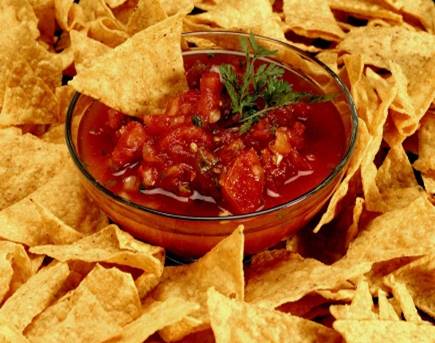
With which spices does the red pepper mix?
It is recommended to use it in combination with such spices as coriander, fennel, turmeric, cardamom, cumin, because chili gives the dish the sharpness and burning, and the remaining spices (not so sharp) are the aroma.
Pepper red ground. Beneficial features
- Red pepper pods include a variety of vitamin groups: from PP, P, B1, B2, to A and P. In addition, pepper contains niacin, choline, folic acid, thiamine, beta-carotene, pyridoxine, riboflavin and ascorbic acid. In addition, it has manganese, iron, zinc, calcium and phosphorus.
- It is noticed that people who eat red pepper powder eat food, metabolism is accelerated, appetite is increased, digestion functions are normalized. To the positive properties of red pepper can also be attributed a unique effect on the work of the liver and brain (when used in moderate doses).
- Recommendations for use are prescribed for people with colds, bronchial asthma, allergies, hepatitis and atherosclerosis. In addition, red pepper perfectly helps against insomnia, slows the development of cancers.
- Red pepper is a good pathogen, in the literal and figurative sense of the word. He contributes to the development of the "hormone of joy" (endorphin), a person is less inclined to experience stress. Burning qualities of pepper raise the pain threshold of the body, cause the blood to circulate faster, have a positive effect on the preservation of immunity.
Red pepper in medicine
Peppers are widely used in medicine, homeopathy and folk medicine. Possessing analgesic, anti-inflammatory, local warming, bactericidal and antioxidant properties, the plant stimulates metabolic processes in the body, increases immunity, improves appetite and activates digestion.
Capsicum (Capsicum) - so called in the homeopathy medicinal raw from dried pepper pods. Capsicum is used for headaches, inflammatory processes of the musculoskeletal system. Active substance pepper capsaicin is able to kill cancer cells, helminths in the digestive system, reduce glucose and insulin levels in the blood, improve blood circulation.
Red pepper in beauticians
Red pepper is an active component of many cosmetic products for skin and hair care. According to European studies, active substance capsaicin stimulates hair growth, eliminates dandruff and fatty seborrhea, reduces the intensity of hair loss, promotes the regenerative process of scalp cells. Capsaicin actively acts on the nerve endings, increasing the flow of blood to the hair bulbs. As a result, so-called "sleeping" bulbs of hair become active, and the hair acquires volume, brilliance and health.
Red pepper in pharmacology
Red pepper can be used for preventive purposes to prevent diseases of the cardiovascular system, thrombophlebitis, atherosclerosis. It has been proven that chilli drugs have an analgesic effect. Pepper plasters, ointments and tinctures have analgesic properties and save from chronic pain. When applying red pepper, endorphins are produced (hormones of joy), which drown out painful sensations.
In Pepper red, the most valuable is the burning and pepper color.
Quality red pepper has a burning taste and characteristic peppery aroma.
 IT IS IMPORTANT TO KNOW! For the hotness of red pepper meets the burning substance - CAPSAICIN (capsaicin).
IT IS IMPORTANT TO KNOW! For the hotness of red pepper meets the burning substance - CAPSAICIN (capsaicin).
Capsaicin (capsaicin) - a substance that gives pepper burning, is in the peel and septums. Seeds, which often get pungent stinging substance from the pepper septum, may also contain a small fraction of capsaicin (capsaicin).
The amount of capsaicin that gives pepperity is estimated in special units - Scoville Heat Units (SHU).
Quality red pepper has a burning effect of at least 20,000 SHU. Capsaicin, which is responsible for the burning, is ONLY in the septums and peel of the pepper.
Since the seeds do not contain any stiffness, they should not be in high quality raw materials.
Red pepper, which before grinding has not been cleared of seeds and tails, will be less burning. Such pepper is considered to be substandard and is falsified.
Ripe pepper, which has a bright red color, is cleaned of seeds and tails, has a high rate of stinging.
The most valuable indicator of the stiffness is 20 000 - 80 000 SHU. For the food industry, 25,000-35,000 SHU are most often used.
Red pepper flakes are characterized by a small fraction of seeds in the composition, but the number of seeds should not exceed more than 15%. Also, the color of the flakes should be dark red, without discolored seeds.
If there are white flakes in the raw material, this means that the supplier has falsified raw materials with immature and rotten paprika pods.
Parameters of raw red pepper raw material:
- Microbiological safety (absence of Escherichia coli, Salmonella, etc.)
- Absence of mycotoxins (absence of mold - Aflatoxin, Ochratoxin)


Another indicator of the quality of red pepper is the color (ASTA).
The main substances that are responsible for chroma:
- carotenoids xanthophyll, capsorubin, capsaicin - they are responsible for the red coloring pigment;
- beta-carotene - responsible for the orange-yellow pigment.
IT IS IMPORTANT TO KNOW! The unit for measuring the color of red pepper is ASTA.
For the color of red pepper corresponds to the ASTA (American Spice Trade Association) indicator developed by the American Trade Association of Spices. Ground pepper with a high ASTA index is characterized by a high content and stability of coloring pigments in its composition.
Pepper with a low ASTA index has an orange tint, and pepper with a high ASTA value is bright red.
The color index (ASTA) of red pepper depends on the type of pepper.
There are more than 140 varieties of pepper, which are different in degree of stinging and color (from green to bright red). In order to achieve the desired color index (ASTA) and the level of stiffness (SHU), manufacturers make grinds (blends) from several varieties of red pepper when milling.
This is due to the fact that one variety of pepper can have a bright red color, but it does not have a burning sensation. For example, Piquillo pepper of bright red color, but burning in it to 5000 SHU. And the pepper of the green color of the Serrano variety has a high concretion - more than 20 000 SHU.
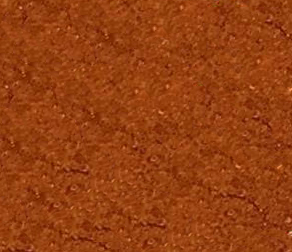
Color index: ASTA 30-40
The burning index: 15 000 - 25 000 SHU

Color index: ASTA 80-90
The stinging index: 25 000 - 35 000 SHU
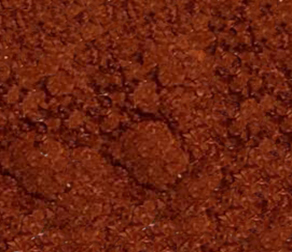
Color index: ASTA 80-90
The index of the stiffness: 35 000 - 45 000 SHU
Therefore, manufacturers who follow the high quality of red pepper can create "blends" from several types of varieties in order to achieve the desired ASTA and stiffness.
TM "Pripravka" buys raw red pepper with the following quality indicators:
- The level of stiffness is 25 000 - 35 000 SHU;
- The color index is 80 ASTA.
These indicators depend on the "blend" (mixture) of several varieties, which will be obtained by grinding in the production.
THE QUALITY OF THE PACT OF THE RED HAMMER DEPENDS ON THE QUALITY OF THE PEPPER HANDS FROM WHICH HE IS MANUFACTURED!
![]()
ATTENTION! CHEAP SUPPORT!
An unscrupulous manufacturer uses a number of ways to counterfeit / falsify quality in order to reduce the cost of spicery.
The smaller the fraction of spice, the easier it is to falsify. Fine grind conceals the true composition of the spice, so it is almost impossible to determine the quality of raw materials.
The basic ways of falsification of red ground pepper and cheapening of raw materials by MANUFACTURED MANUFACTURERS:
- Use of raw materials with mold, rot and raw materials (raw materials containing aflatoxins that cause cancer disease
- Adding a spenta - waste after extraction (squeezing essential oils from pepper). In the spent remain salvents, used for extraction - acenone, hexane. The spent has an aversion smell and a bitter taste.
- Mixing seeds and tails
- Using taalu (colorless chili fruit) + staining with artificial dyes
- Addition of impurities of inorganic origin (flour or starch)
- Mixing paprika for the brightness of the raw materials (a pronounced aroma of paprika is heard)
- The sale of raw materials with an excess of safety indicators (with poor microbiology, with excess in heavy metals, etc.)
Raw with mold (aflatoxins) Spent red pepper
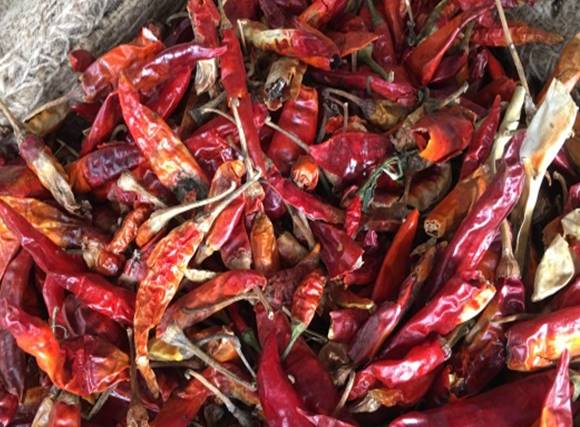
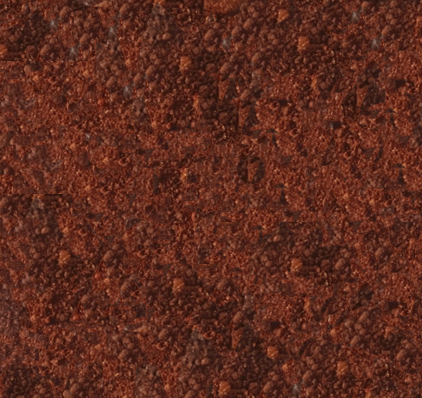
Quality pepper red ground
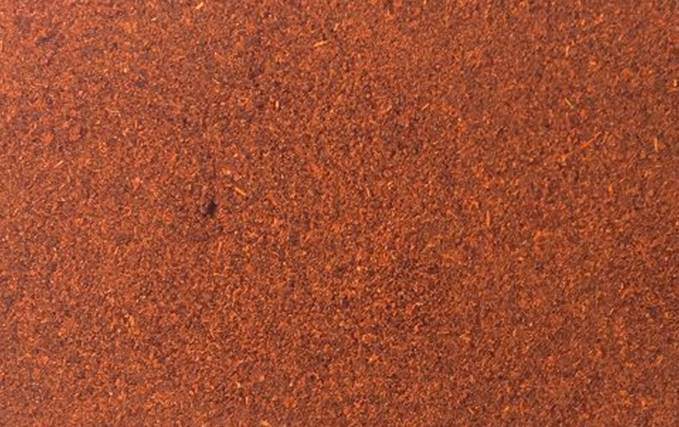
Threats that entail the use of substandard red pepper
Mold is a sign of infection with mold fungi, which are dangerous to health (AFLOTOXINS)
![]() Aflotoxins affect the color, but do not affect the burning.
Aflotoxins affect the color, but do not affect the burning.
Aflotoxins (abbr. Aspergillus flavus toxin) are the most deadly, of all biologically produced poisons, aflotoxins are the strongest hepatoconceregens found to date. The toxin destroys liver cells, causing acute toxic hepatitis. There are data on the relationship with liver cancer, the manifestation of mutagenic and teratogenic effects (a violation of the gene structure, manifested in deformities in subsequent generations).
Resistant to heat treatment of the product.
Their toxicity is very high: consumption of products with a content of 1.7 mg / kg aflotoxin in a short period can lead to irreversible changes in the body. When a high dose of poison (75 mg / kg body weight) enters the body, death occurs within a few days due to irreversible liver damage, when a low dose occurs, chronic aflatoxicosis develops (suppression of the immune system, damage to DNA, activation of oncogenes)

When buying cheap raw materials red pepper with exceeding the norms for aflotoxins, the manufacturer puts the price on the shelf lower by 10-15% compared to competitors.
Pepper red ground. Quality tests (not laboratory tests)
Qualitative ground red pepper has a color of red shades (from orange to dark red), without extraneous dark inclusions, characteristic peppery aroma and burning taste.
1. ASSESSMENT OF DRY HAIR OF THE HAMMER RED PACT
It is necessary to pour a thin layer of ground red pepper on a sheet, press down on top with a white sheet and evaluate:
- The presence of dark inclusions, which indicate the content of impurities of mineral and vegetable origin.
- Color and color saturation. Quality ground red pepper has a uniformly-colored color, characteristic red shades, homogeneous grinding and friability.
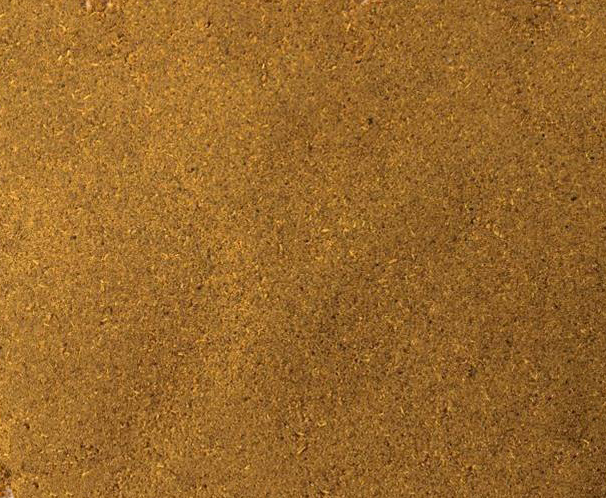
Sample number 1. Low quality.
It has a characteristic pepper smell, but the color of the raw material is yellow, with an uncharacteristic greenish tinge. The taste is not burning. A large proportion of dark inclusions and the presence of large rods.
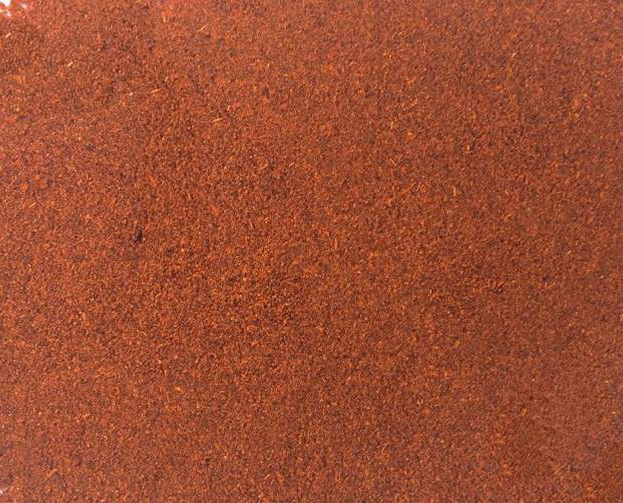
Sample number 2. High quality.
A sample of characteristic red color, has a pronounced pepper smell, burning taste. In raw materials there is no large proportion of sticks and dark inclusions, which indicates the high quality of raw materials.
2 . ORGANOLEPTIC EVALUATION OF THE HAMMER RED PACT
Option 1. Method of "Brewing tea."
It is necessary to prepare an aqueous solution of ground red pepper: 1 tbsp. A spoonful of ground pepper is poured into 100 ml of boiling water and evaluated:
- Color - the quality of raw materials should be uniform color, red-orange shades. There should be unnatural brown or greenish shades. Pepper should be precipitated, the aqueous solution should not be bright red at the same time. If the solution is strongly colored, this indicates the presence of dyes.
- Aroma - evaluate the presence of a characteristic and foreign flavor.
- Taste - assess the presence of extraneous tastes (the taste of the pre-blossom, moldy, rotten raw materials). When tasting the brewed ground red pepper, there should be a burning sensation characteristic of chili peppers.
It is not allowed to have spots of fat on the surface of the aqueous solution, their presence indicates the tinting of the raw material with fat-soluble dyes.
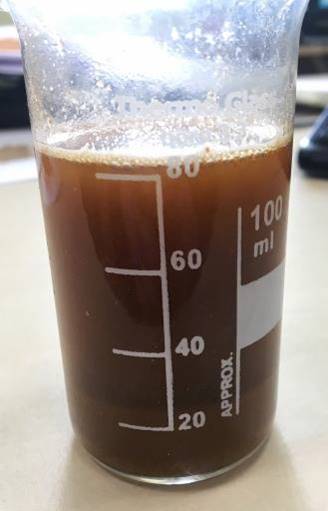
Sample number 1. Low quality.
The powder precipitated with a large proportion of dark inclusions, the solution turned into an uncharacteristic dark brown color, indicating the tinting of the raw materials with dyes.
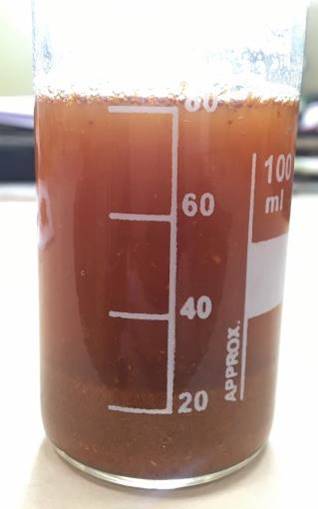
Sample number 2. High quality.
The powder immediately precipitated without dark inclusions, the solution has a characteristic orange-red color and a characteristic odor.
AND WHAT ARE YOU PAYING MONEY?
- Pepper red ground TM "Pripravka" passes 7 degrees of purification of raw materials:
- Culling out lots of raw materials that do not meet food safety standards
- Magnet - cleaning from magnetized metal impurities
- Vibration cleaner - cleaning of plastic, glass, garbage
- Destoner - cleaning of stones, earth
- Aspiration - cleaning from dust, insects
- Separation - removal of rotten, mold-damaged raw materials
- Metal Detector - cleaning from non-magnetized metal impurities
TM "PRIPRAVKA". FOOD SAFETY IS GUARANTEED!
10 June 2017 Previous
Previous